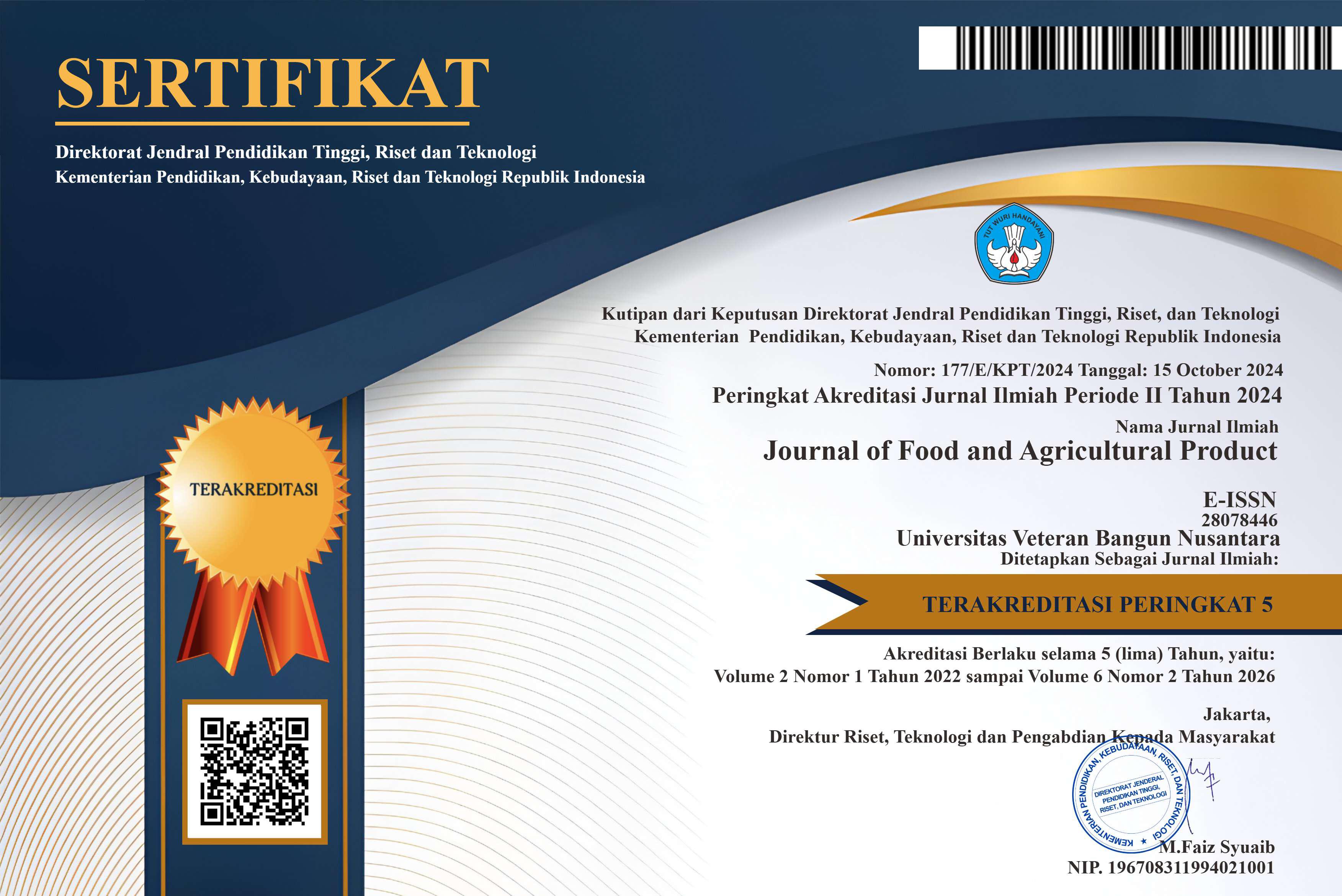Sensory Evaluation and Chemical Characteristics of Klepon Cake Substituted for Sago Flour with the Addition of Butterfly Pea Flower Extract
DOI:
https://doi.org/10.32585/jfap.v3i2.4599Abstract
Klepon cake is a traditional food which is generally made from glutinous rice flour filled with palm sugar. Klepon cake with the substitution of sago flour contains relatively high levels of dietary fiber, however its addition can affect the sensory properties of the product. One of the product developments in klepon cakes substituted for sago flour is the addition of butterfly pea flower extract as a natural coloring. The aim of this research was to determine the sensory acceptability and chemical characteristics of klepon cake products substituted for sago flour with the addition of butterfly pea flower extract. This research used a Completely Randomized Design (CRD) with 3 replications. The formulation used in making klepon cake with a substitution of sago flour is with the addition of 0.6% w/v; 1.2 % w/v; 1.8% w/v butterfly pea flower extract and control. The results of sensory analysis and data analysis using Analysis of Variance (ANOVA) showed that the most preferred sample was klepon cake substituted for sago flour with extract treated with the addition of butterfly pea flower at 1.8% w/v. The results showed that klepon cake substituted for sago flour with the addition of telang flower extract had a water content of 40.91%, ash content of 2.93%, antioxidant activity of 12.76% and vitamin C of 2.93%.
Keywords: klepon, butterfly pea flower, antioxidant
Downloads
Downloads
Published
How to Cite
Issue
Section
License

This work is licensed under a Creative Commons Attribution-NonCommercial-NoDerivatives 4.0 International License.




